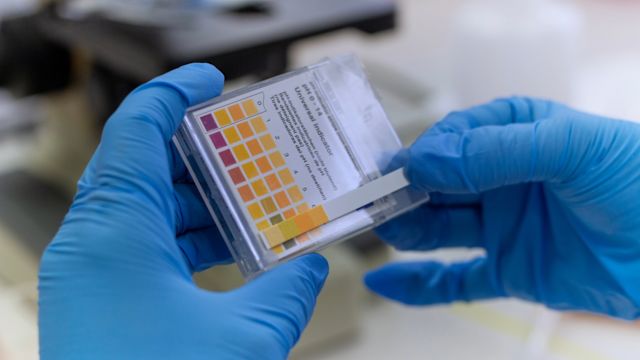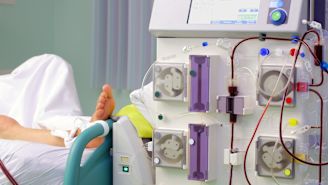Updated on March 10, 2025.
The kidneys are a pair of organs located along either side of the spinal column and below the ribs in the lower back. Each kidney is about the size of a fist and contains a million filtering units called glomeruli. As blood passes through the kidneys and the glomeruli, excess fluid and unneeded substances are filtered out, while blood cells and other needed substances are sent back into the bloodstream.
Urine is made from the excess fluid and unneeded substances that get filtered out. Unneeded substances can include waste products as well as excess nutrients. Urine is produced in the kidneys, stored in the bladder, and expelled through the urinary tract.
Sometimes urine contains substances it should not contain. One example of an excess substance is protein. Greater-than-normal amounts of protein in the urine is called proteinuria.
Normally, urine contains very small amounts of protein. Sometimes protein levels can increase temporarily from dehydration, intense exercise, kidney stones, stress, or as a side effect from certain medications.
Proteinuria can also be a symptom of kidney disease, including rare kidney diseases like complement 3 glomerulopathy (C3G). Assessing and reducing proteinuria is an important aspect of treatment for C3G.
What is C3G and how does it cause proteinuria?
C3G refers to a rare group of kidney disease that arise from problems with a part of the immune system called the complement system. The complement system is made up of many different proteins found throughout the body. Normally, these proteins activate in response to things like infections or injuries to tissues, and they help direct the immune system towards things that need to be removed from the body.
When a person has C3G, complement system activity is dysregulated, causing a breakdown of complement 3 (C3) proteins. These broken up proteins clump together and become stuck in glomeruli, the glomeruli become inflamed and damaged, and the kidneys become less effective at filtering blood.
This causes inflammation and damage in the kidneys, and a gradual loss of kidney function. As the kidneys function less well, waste and excess fluid circulate back into the blood, and blood cells and protein end up in the urine.
Are proteinuria and albuminuria the same thing?
Albumin is a protein that helps fluid stay inside the blood vessels and prevents fluid from leaking into tissues. It also helps transport hormones and vitamins throughout the body. Albuminuria is high levels of albumin in the urine. It is a type of proteinuria, though the two terms are sometimes used interchangeably.
Low levels of albumin in the blood are another symptom of C3G. The term for this is hypoalbuminemia. Blood tests to check albumin levels are a part of diagnosis and monitoring of C3G and other types of kidney disease.
How is C3G treated?
Proteinuria is an important factor when assessing the severity of C3G, assessing the risk of complications, and making treatment decisions. C3G can include worsening kidney function, leading to chronic kidney disease (CKD) and end-stage renal disease (ESRD), and complications associated with these complications, including high blood pressure, cardiovascular disease, anemia, and mineral bone disorder.
There is no cure for C3G, and treatment focuses on controlling symptoms and preventing complications. Treatment can include:
- Medications to reduce proteinuria, blood pressure, edema, and cholesterol levels
- Drugs that reduce activity in the complement system (complement inhibitors) and other drugs that act on the immune system, such as corticosteroids
- Changes to diet and habits, including reducing sodium intake, monitoring fluid intake, and avoiding any habits that are harmful to the kidneys, such as smoking
Treatment for C3G will vary from person to person and depend on the severity of the disease and other factors. A healthcare provider will be your best source of information about treatment.







